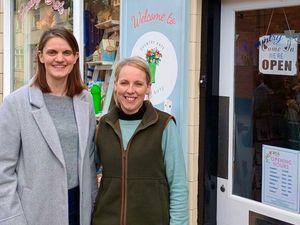Unemployment rate remained flat last month
The UK jobless rate remained unchanged in the latest three months amid mounting signs that Britain's jobs market has cooled.
Estimates from the Office for National Statistics revealed that the unemployment rate for those aged 16 and over was 4.2 per cent in the three months to August, the same as in the previous three months.
It comes after official figures last week revealed that real earnings are outstripping inflation for the first time in nearly two years.
But there was also a mixed picture for the wider jobs market after last week's figures showed pay growth starting to ease back for the first time since January, job vacancies falling for the 15th time in a row and an 11,000 drop in UK workers on payrolls during September.
Figures for numbers claiming unemployment benefits, including Universal Credit, in the West Midlands were mainly down in September.
For the region the total was down 575 to 179,230 or 4.9 per cent of the working population.
Dudley saw a rise of 75 to 9,115 (4.6 per cent) with Sandwell up five top 13,500 (6.2 per cent).
The rate for Wolverhampton was the highest in the Black Country at 7.5 per cent with claimants down 20 to 12,305. Walsall saw a fall of 85 to 9,515 (5.5 per cent).
Staffordshire's total was down 70 to 14,885 (2.8 per cent). Cannock Chase saw a drop of 50 to 2,110 (3.4 per cent) and South Staffordshire was down 10 at 1,650 (2.5 per cent).
In Stafford claimants rose 20 to 2,000 and in Lichfield it was up 15 at 1,505. The rate was 2.4 per cent for both.
Wyre Forest, including Kidderminster, saw a drop of 35 to 1,815 (3.1 per cent).
The inactivity rate nationally among those aged 16-64 also remained unchanged at 20.9 per cent, according to the ONS.
The latest "experimental" figures had been delayed by a week due to a low response to its labour force survey, and the ONS said it has used extra data sources to estimate the figures, including more real-time payroll data.
The ONS said this provides a more "holistic view" of the labour market while the traditional survey statistics are uncertain.
Darren Morgan, ONS director of economic statistics, said: "This is part of our transformation of the way we measure the labour market where we are introducing an improved Labour Force Survey, asking more people in different ways about their employment status."
The data also showed that 119,000 working days were lost to industrial disputes in August, with the majority of the strikes in the health and social work sector.
Junior doctors and hospital consultants have staged a series of strikes in a long-running dispute over pay and conditions in the English NHS.
Earlier figures from the ONS showed regular earnings rose by a near record 7.8 per cent in the three months to August and were 0.7 per cent higher with Consumer Prices Index inflation taken into account.
Revised figures from the ONS also revealed wages have been out-pacing inflation since the three months to July.
It means wages are rising faster than prices for the first time since October 2021.
However, earnings growth eased back from 7.9 per cent in the three months to July in a sign that firms are starting to hold back on wage hikes.
Vacancies also dropped for the 15th time in a row - down 43,000 quarter on quarter to 988,000 in the three months to September _ in a further sign that Britain's jobs market is cooling in the face of a barrage of interest rate hikes and economic worries.
Jake Finney, economist at PwC UK, said: "The UK labour market remains tight but is cooling, with unemployment rising, vacancies declining, and pay growth slowing."
The latest national data showed there were 1.4 million unemployed in the three months to August while the employment rate also remained unchanged at 75.7 per cent, with 31.6 million in jobs.





